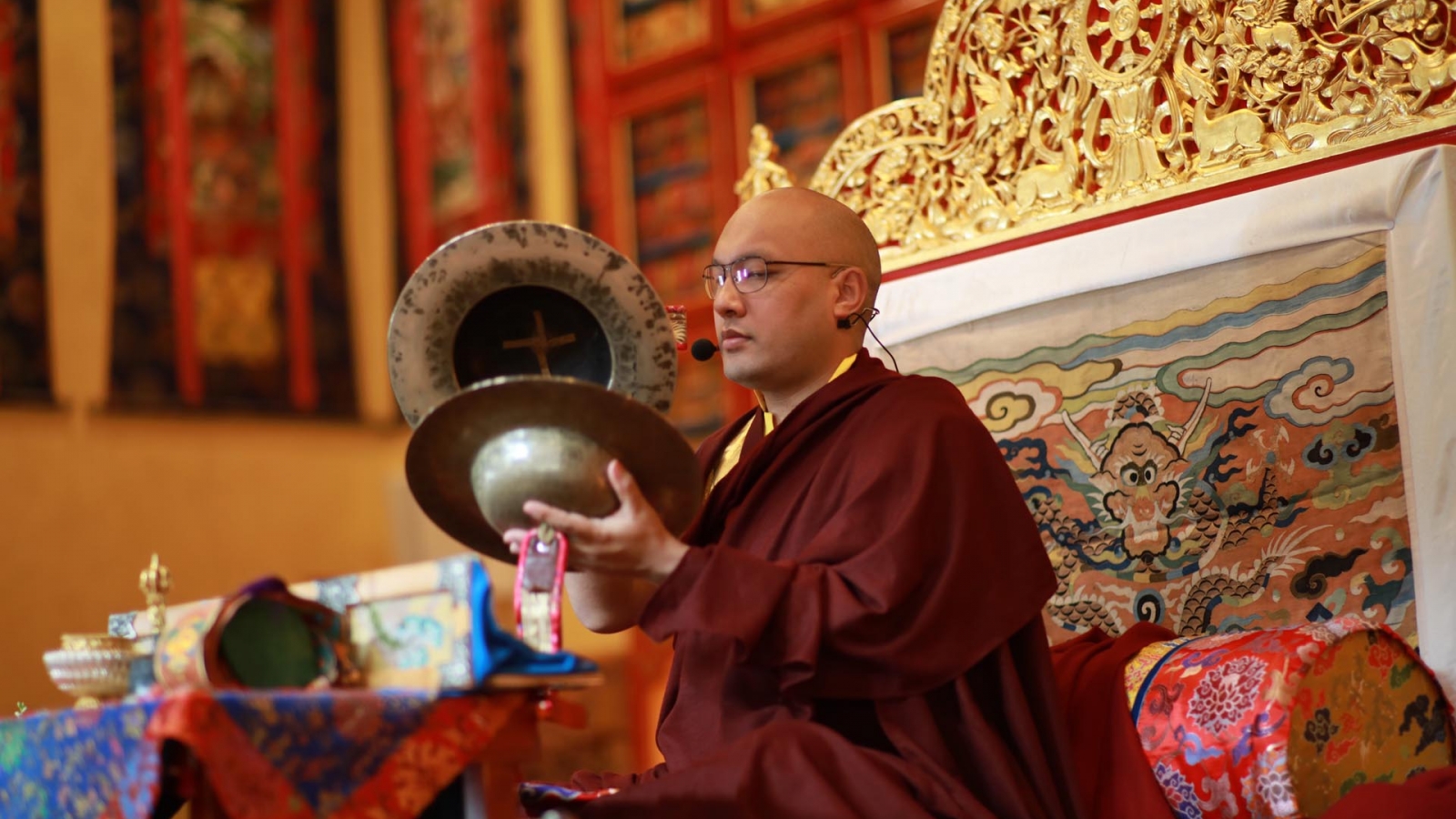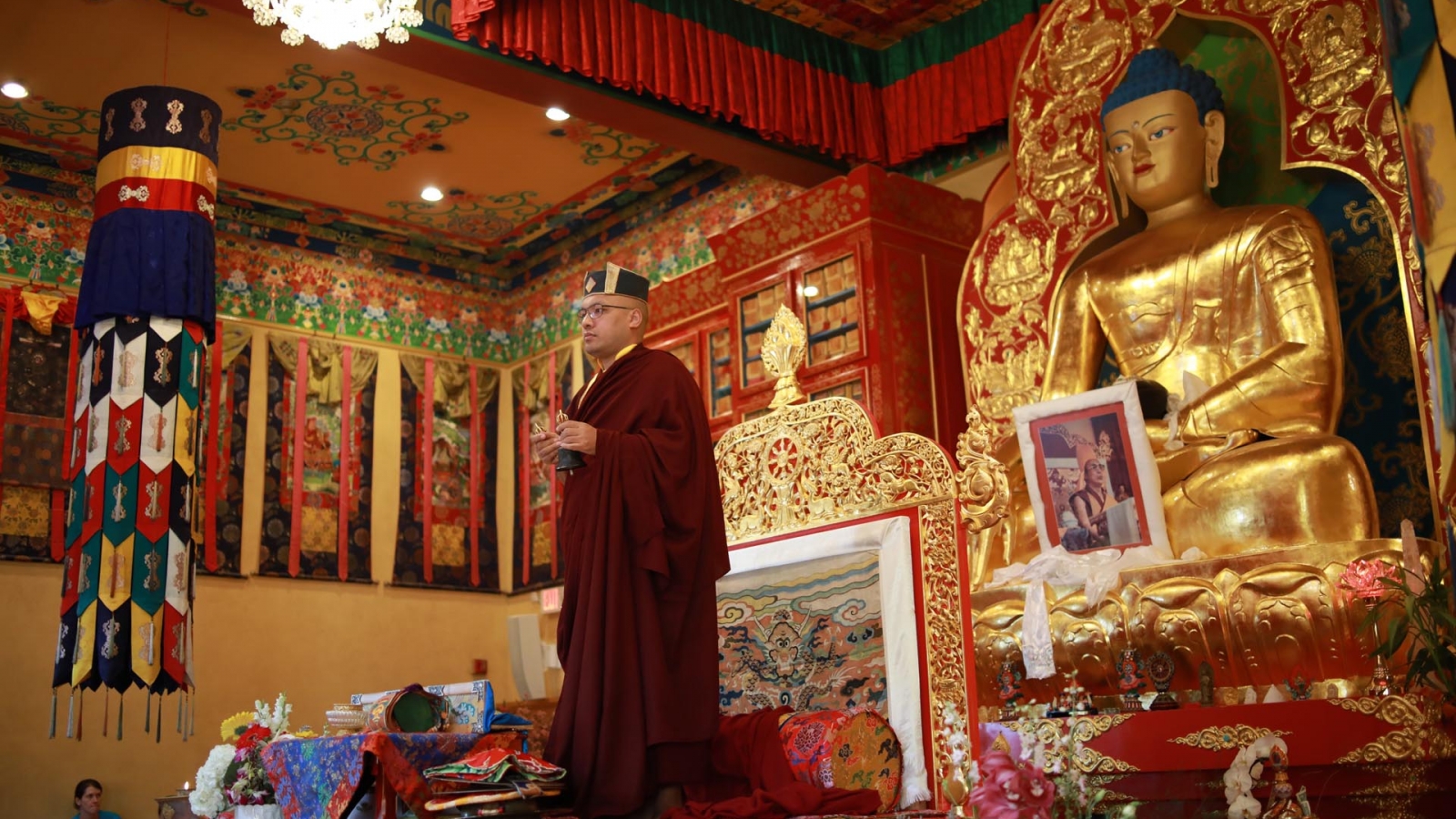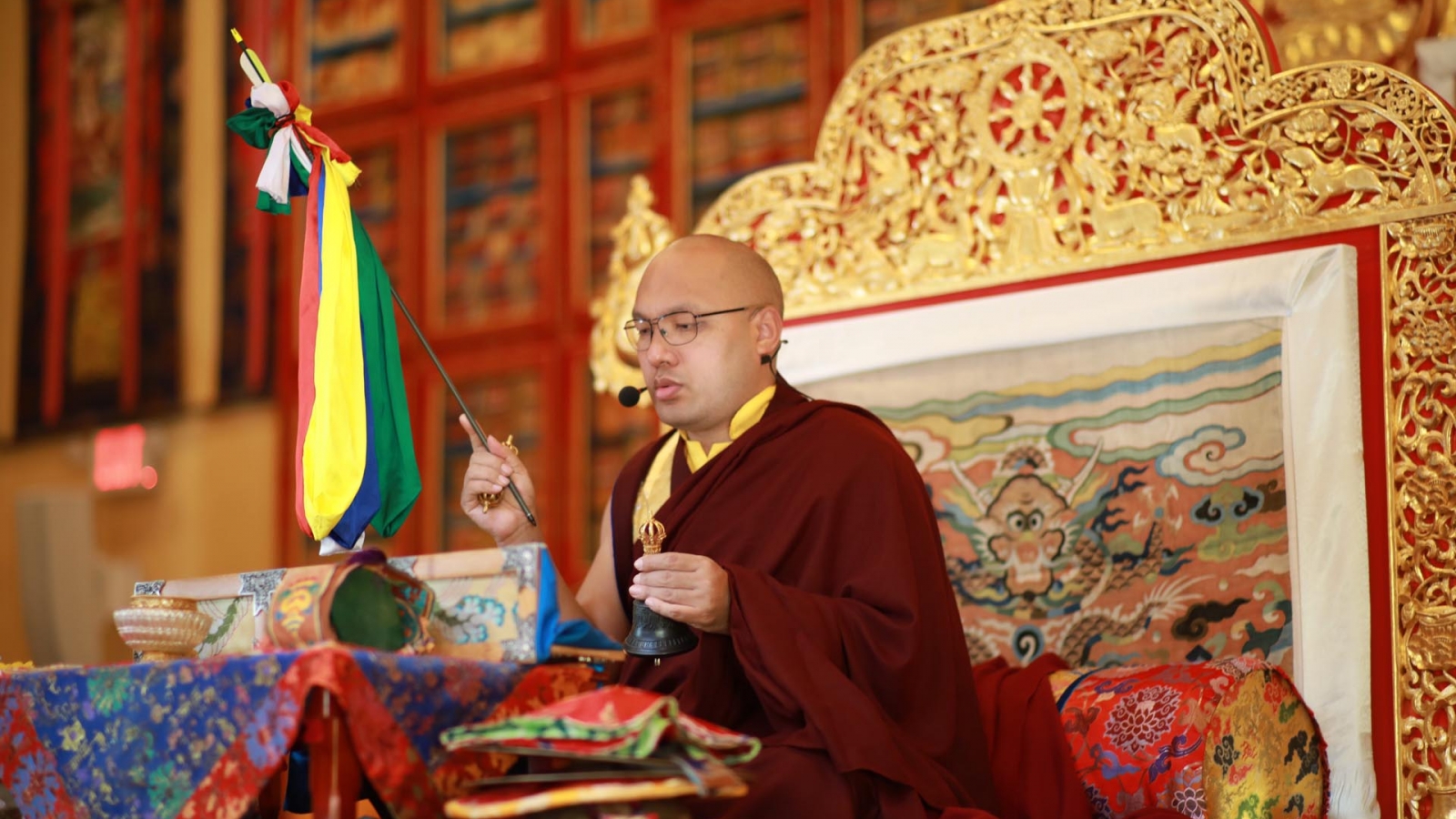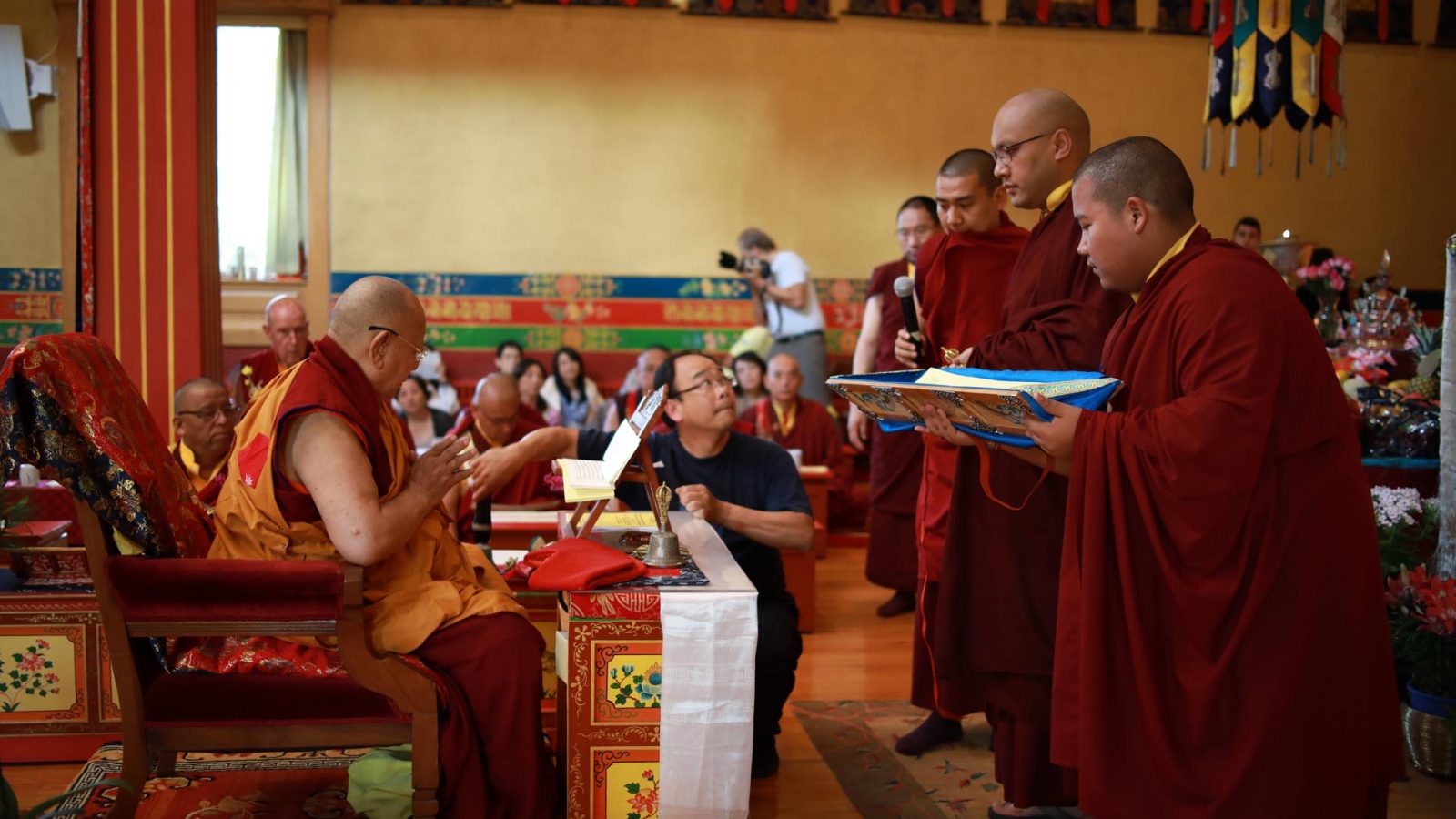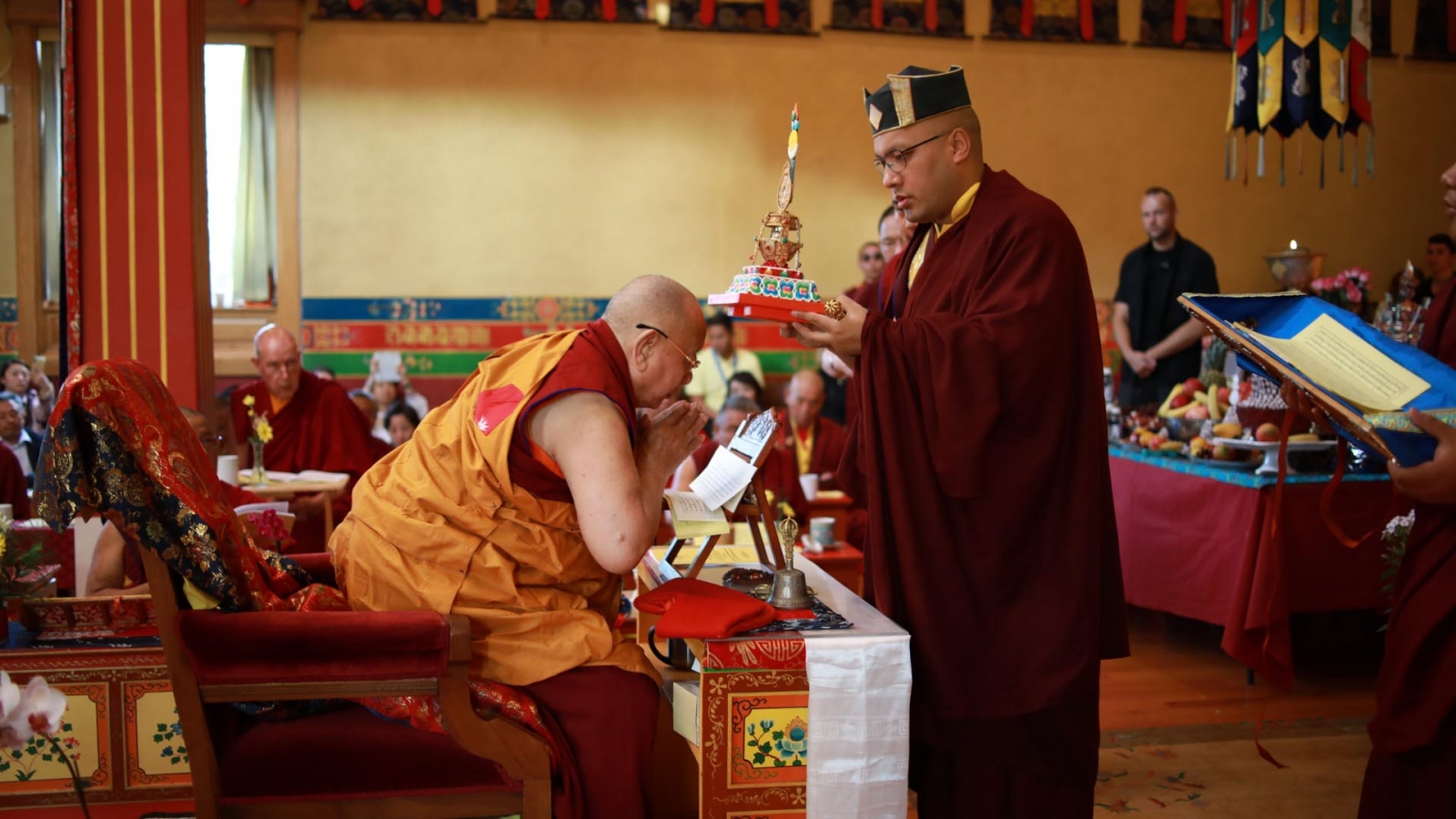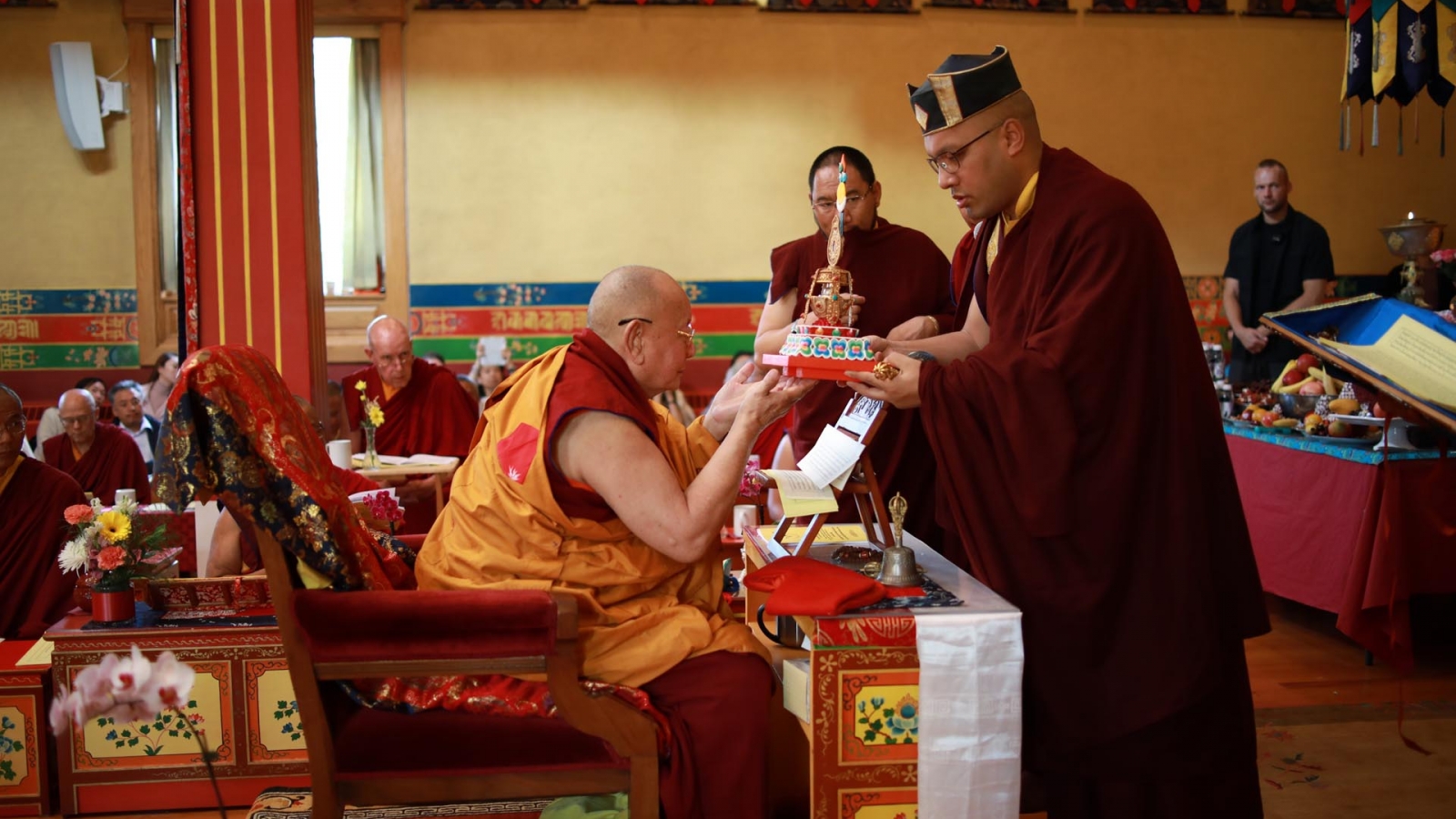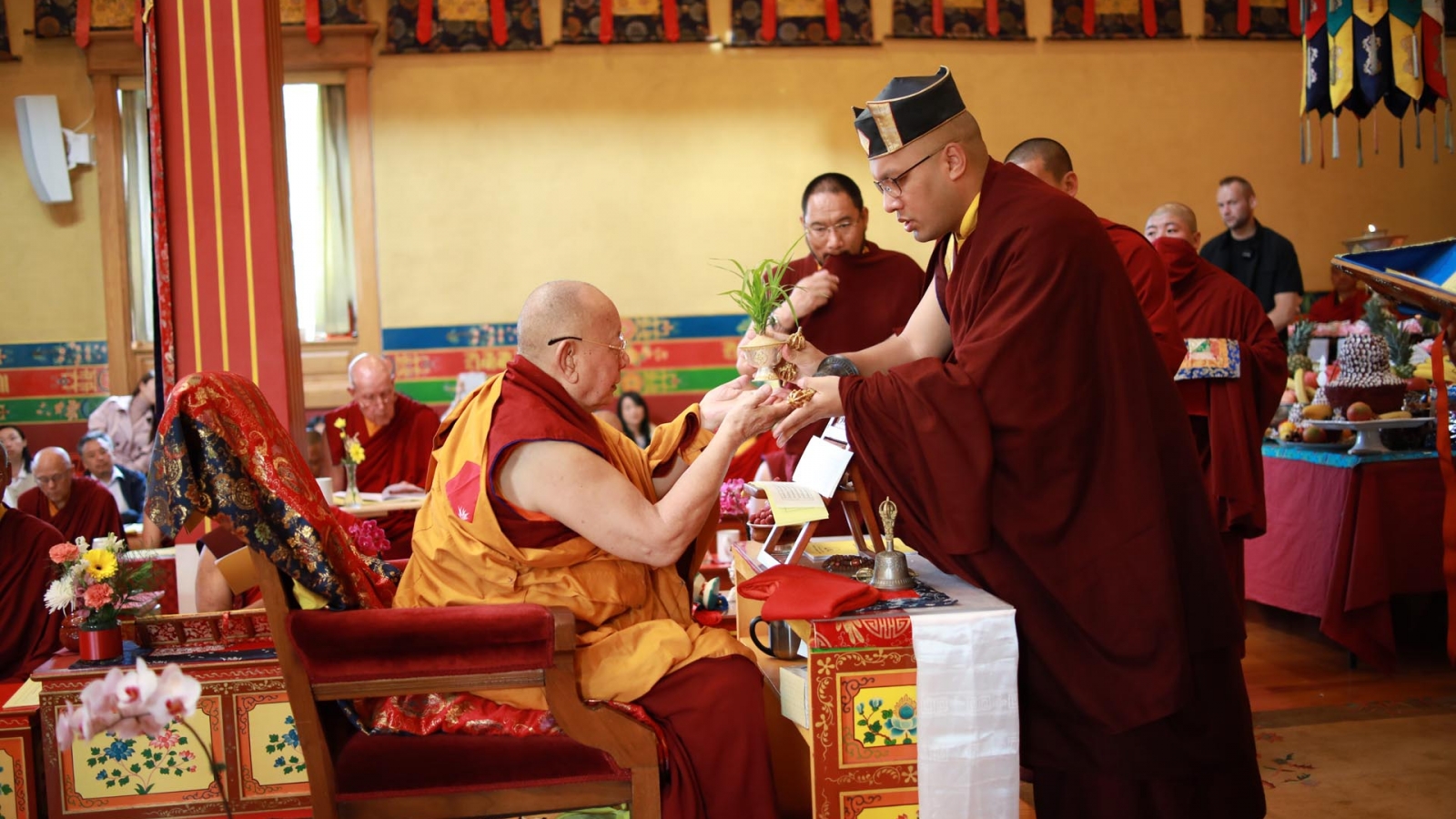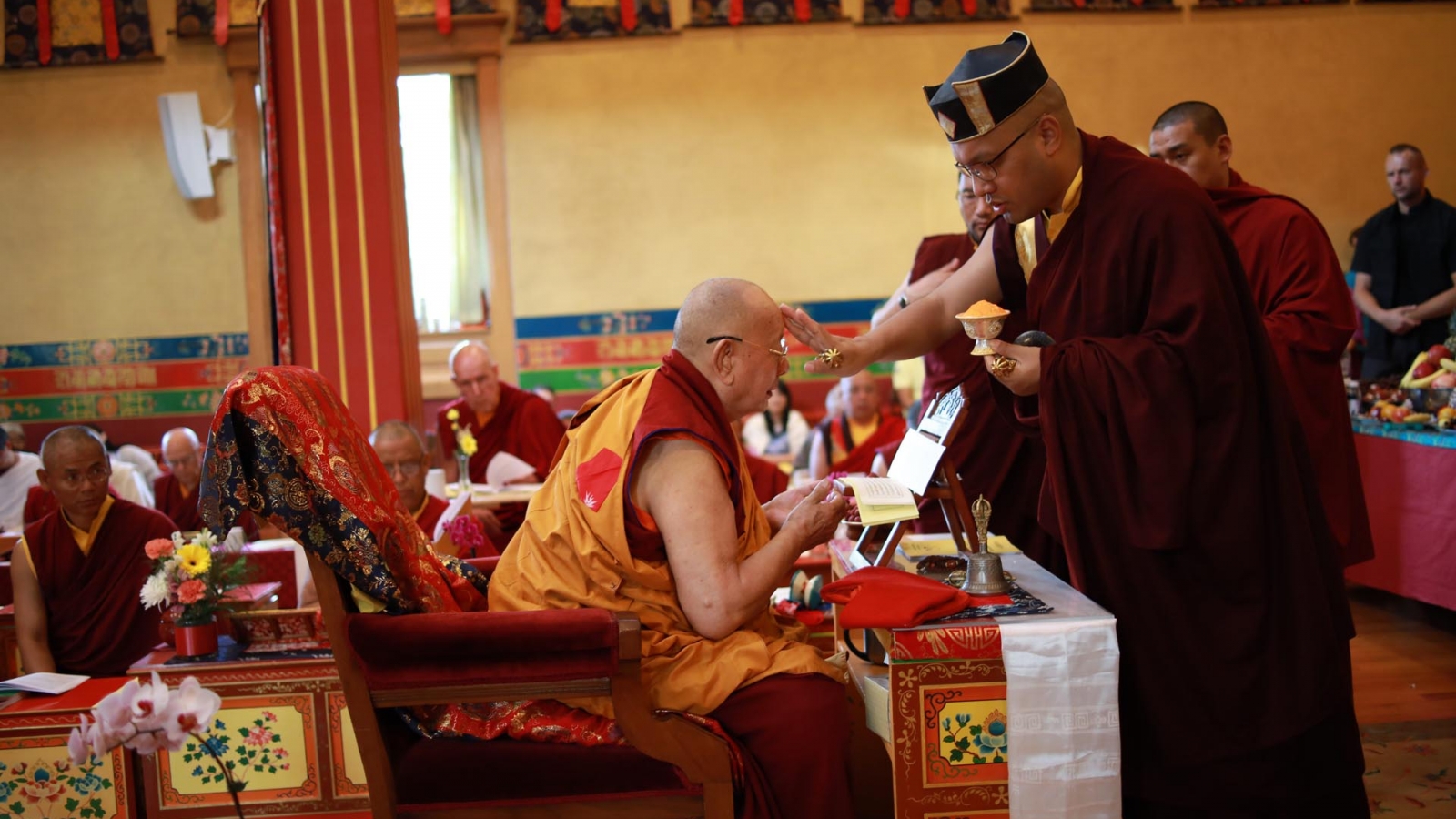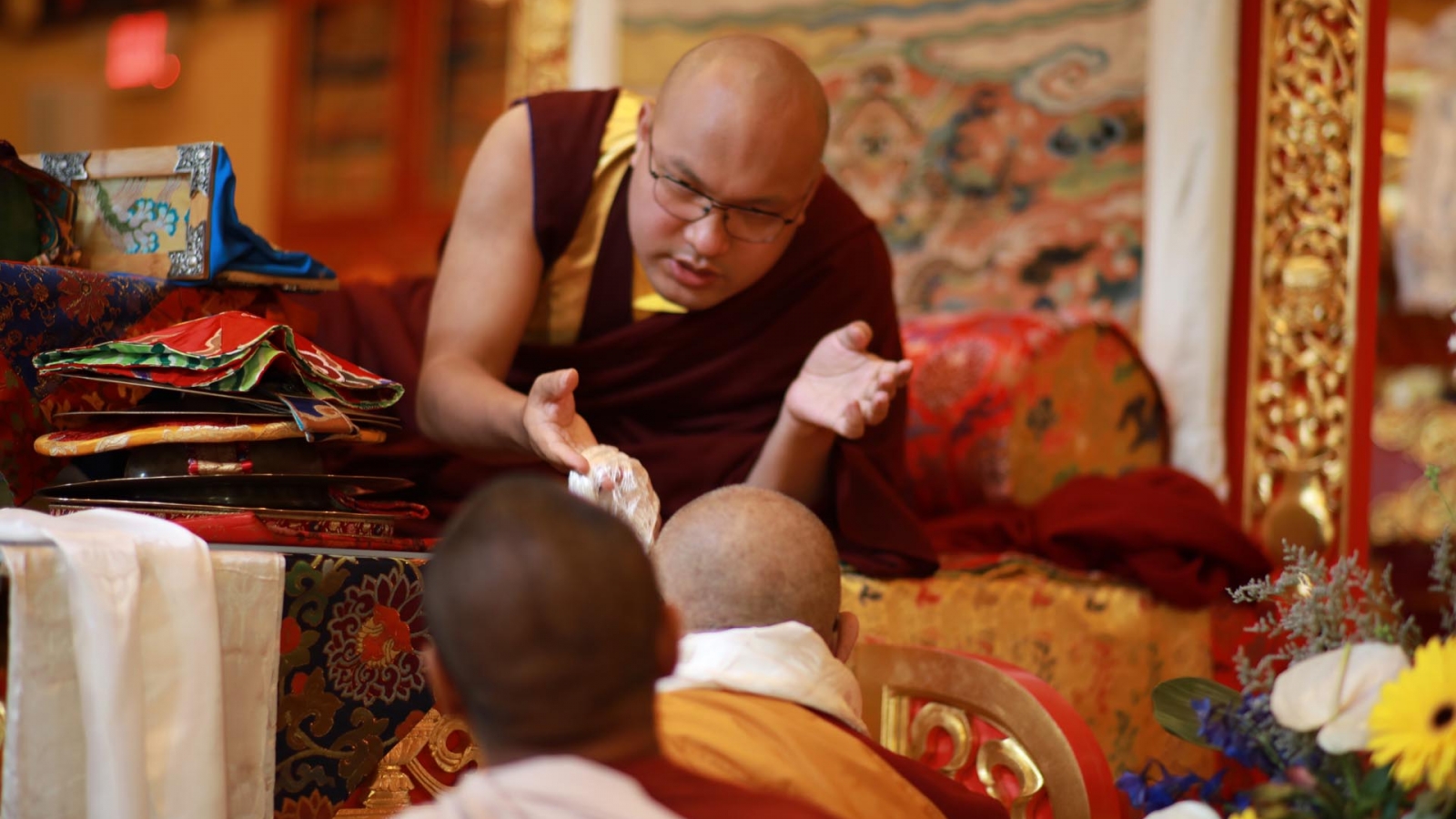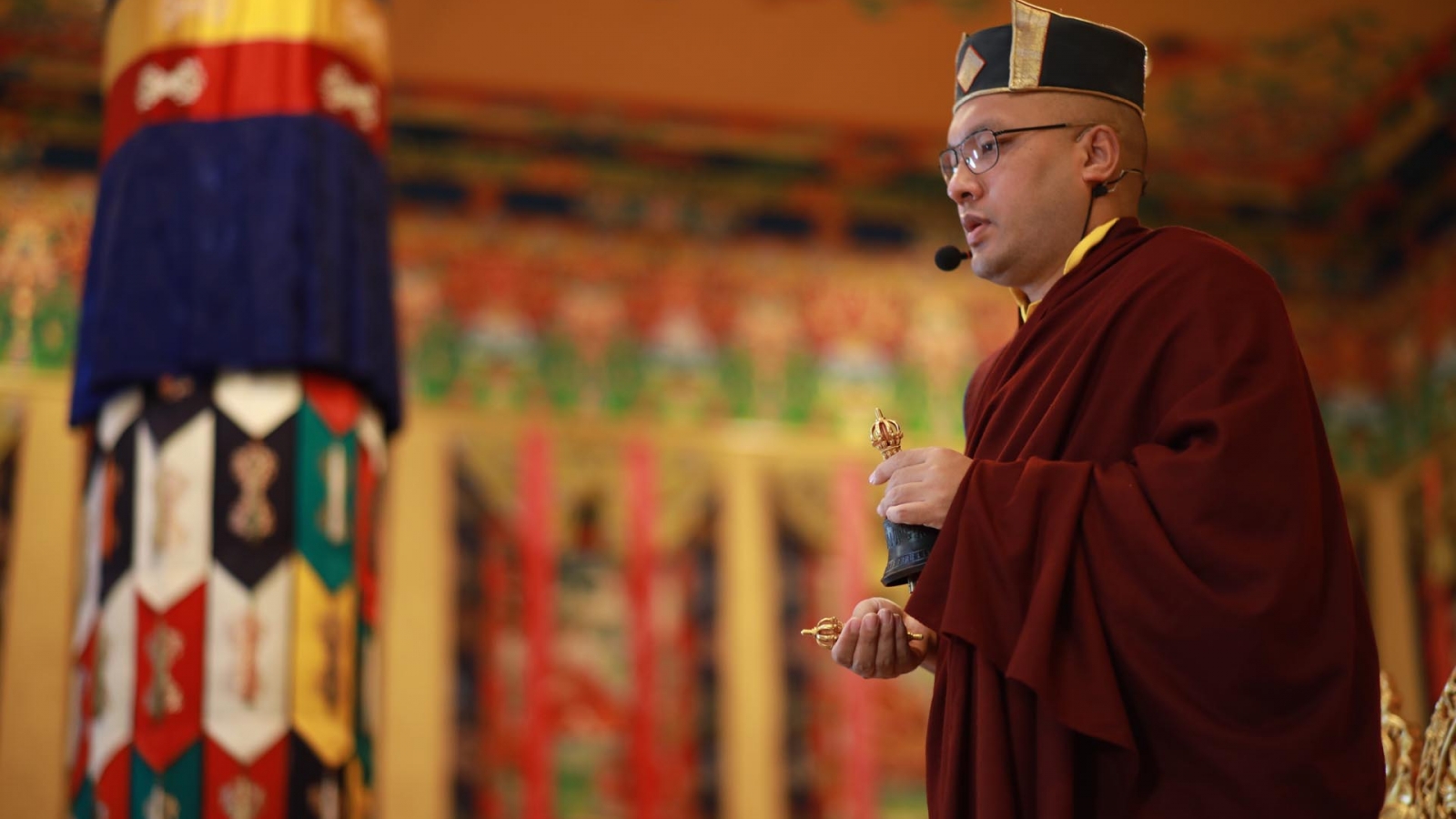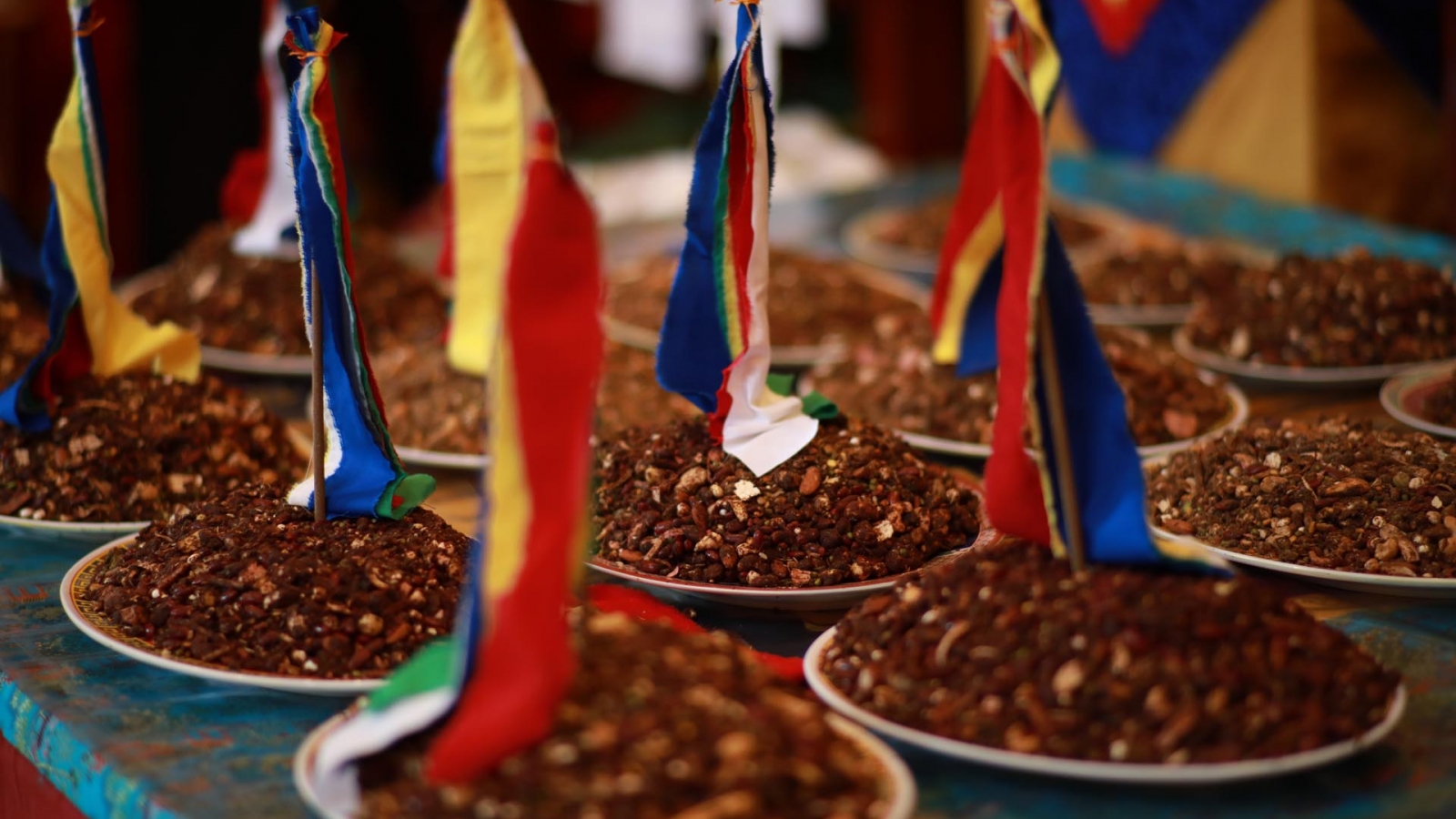Karma Triyana Dharmachakra, Woodstock, New York
June 21 to 24, 2018
Following the request of Khenpo Karthar Rinpoche’s students, His Holiness arranged three days of practice for Rinpoche, who is ninety-five this year. They took place in the beautifully decorated shrine hall at Karma Triyana Dharmachakra (KTD). A golden pavilion enshrined a long life vase and on the wall behind it hung a tall thangka of Amitabha, the deity of long life. Nearby, was a shrine for the five Tseringma sisters with a special torma evoking their mountain residence and a brilliant statue of Milarepa, who was their guru.
These two shrines reflected the two practices that were performed three days. The morning saw the practice known as “The Citadel of Indestructible Vajra Life: A Long-Life Offering of the Three Roots Combined in the Karma Kamtsang Tradition.” The central figure of the practice is the red deity Amitayus who has three faces and six arms. In reference to the three roots (lama, yidam, and protector), the Karmapa has explained that the aspect of the lama is Tsepakme (Amitayus); the aspect of the yidam is the great compassionate one, Gyalwa Gyatso (Jinasagara); and the aspect of the Dharma protector is the wisdom protector Bernakchen (Mahakala). In this way, all the three roots are complete in this single form.
In 2016, during the 33rd Kagyu Monlam in Bodh Gaya, the Karmapa bestowed the empowerment of the Three Roots Combined. He explained then that the original text came from pure visions of the 3rd Karmapa, Rangjung Dorje (1284–1339). It was in practicing this text that the 8th Karmapa, Mikyö Dorje (1507–1554), said, “especially pure visions and dreams appeared in my experiential awareness.” He added an empowerment and completion stage to the practice, and then the 9th Karmapa, Wangchuk Dorje (1556–1603), created an extensive sadhana by supplementing Kamtsang practices with those from the Nyingma tradition. The treasure revealer Chöje Lingpa (1682–1725) discovered a ritual of the Three Roots Combined, and finally, Jamgön Kongtrul Lodrö Thaye (1813–1899) included the lineages of the empowerment and reading transmission in his Treasury of Precious Terma.
In addition to this rich lineage of practice texts, the Karmapa found a precious commentary on the Three Roots Combined by the Fourth Goshir Gyaltsap Drakpa Dondrup (1547–1613). In receiving this empowerment from the present Goshir Gyaltsap Rinpoche, the Karmapa revealed that among hundreds of empowerments, this one gave him a special feeling. Taking an interest in reviving this “exceptional and profound text of the Karmapa’s tradition,” he has arranged a new version of the practice based on the Kagyu and Nyingma traditions mentioned above. He especially recommended that the Three Roots Combined be recited for the long life and flourishing activity of the lamas in his Karma Kamtsang lineage.
Following his own advice, the Karmapa suggested this practice be recited for the long life of Khenpo Karthar Rinpoche. It began on June 21 when the nuns from Bhutan performed the role of chant masters (as they did during the North American Kagyu Monlam), leading the practice for the hundreds who filled the shrine hall. On the following day, the Karmapa arrived at KTD and presided over the ceremonies, which also included the afternoon practice of the five Tseringma.
This ritual is also performed during the Nuns’ Winter Gathering in Bodh Gaya, and there in 2016, the Karmapa explained that the five Tseringma are protectors of the Kagyu lineage while the main Tseringma, who carries a long-life vase and vajra, also functions as a yidam and a lama. She was closely connected to Milarepa, who said, “In the human realm, my teachings are held by the Teacher from Central Tibet (Gampopa). In the non-human realm, they are held by Tseringma.” The Karmapa also mentioned that during the time of his previous incarnations, this practice of Tseringma was performed extensively at his seat of Tsurphu Monastery in Tibet. It was considered as important as other extensive practices (drupchen) of the major deities.
On the third day, June 23, the Karmapa took on the role of the umdze for both practices, and in the early morning of June 24th, the final day, after a condensed version of the Three Roots Combined was recited, he bestowed the long life empowerment on Khenpo Karthar Rinpoche. The Karmapa offered each of the eight precious substances, such as a right-coiling conch shell, a mirror, durva grass, and so forth, to Khenpo Rinpoche, sometimes touching them to his hands and at others, he made a more direct connection, giving him the yogurt to eat and placing the red mark of a tika on his forehead using the vermillion. The Karmapa’s loving care and their close connection were evident throughout the morning’s ceremony, as it brought to a culmination the three days of practice and the many decades that Khenpo Rinpoche’s students have made prayers for his very long life.


